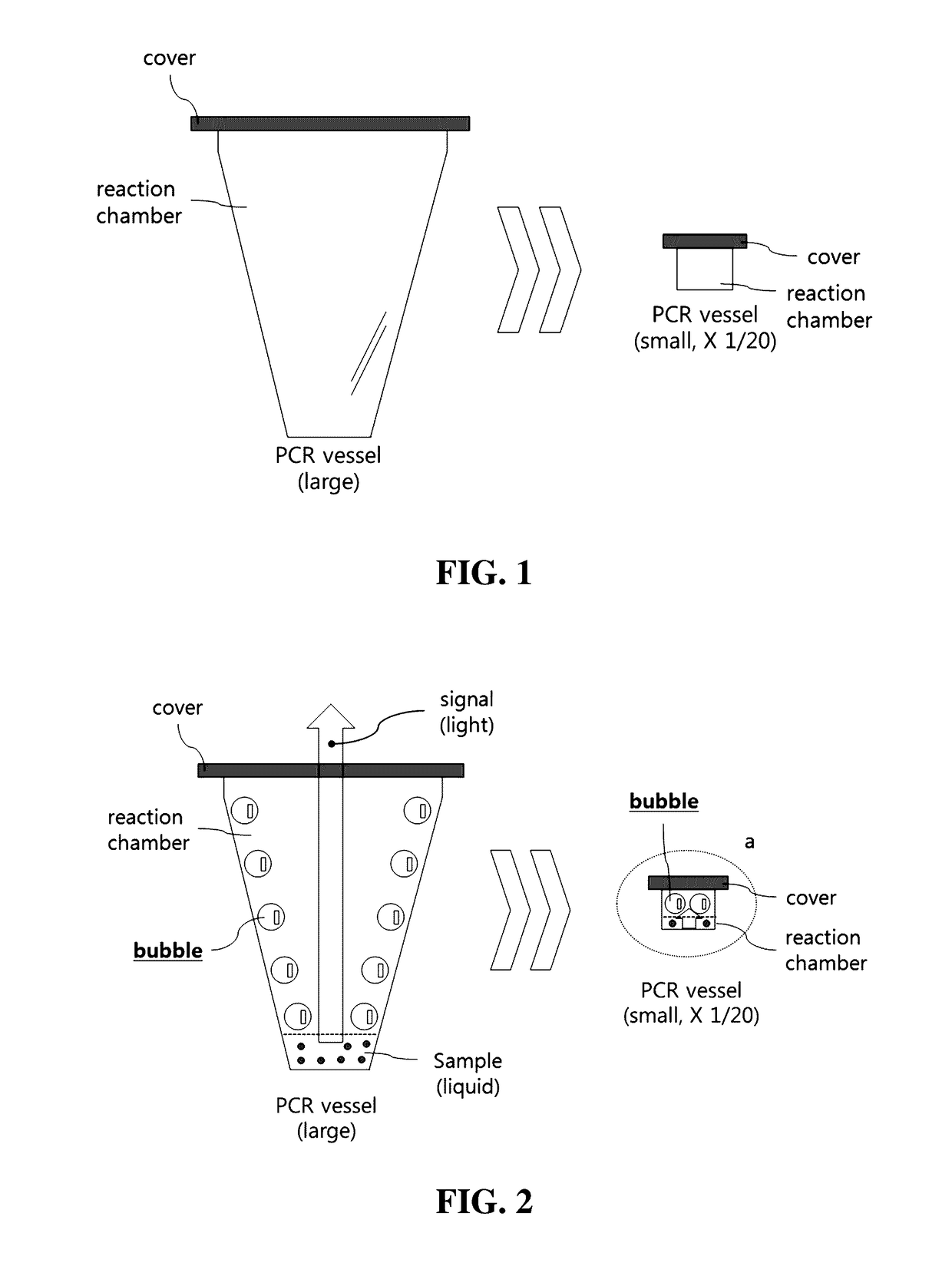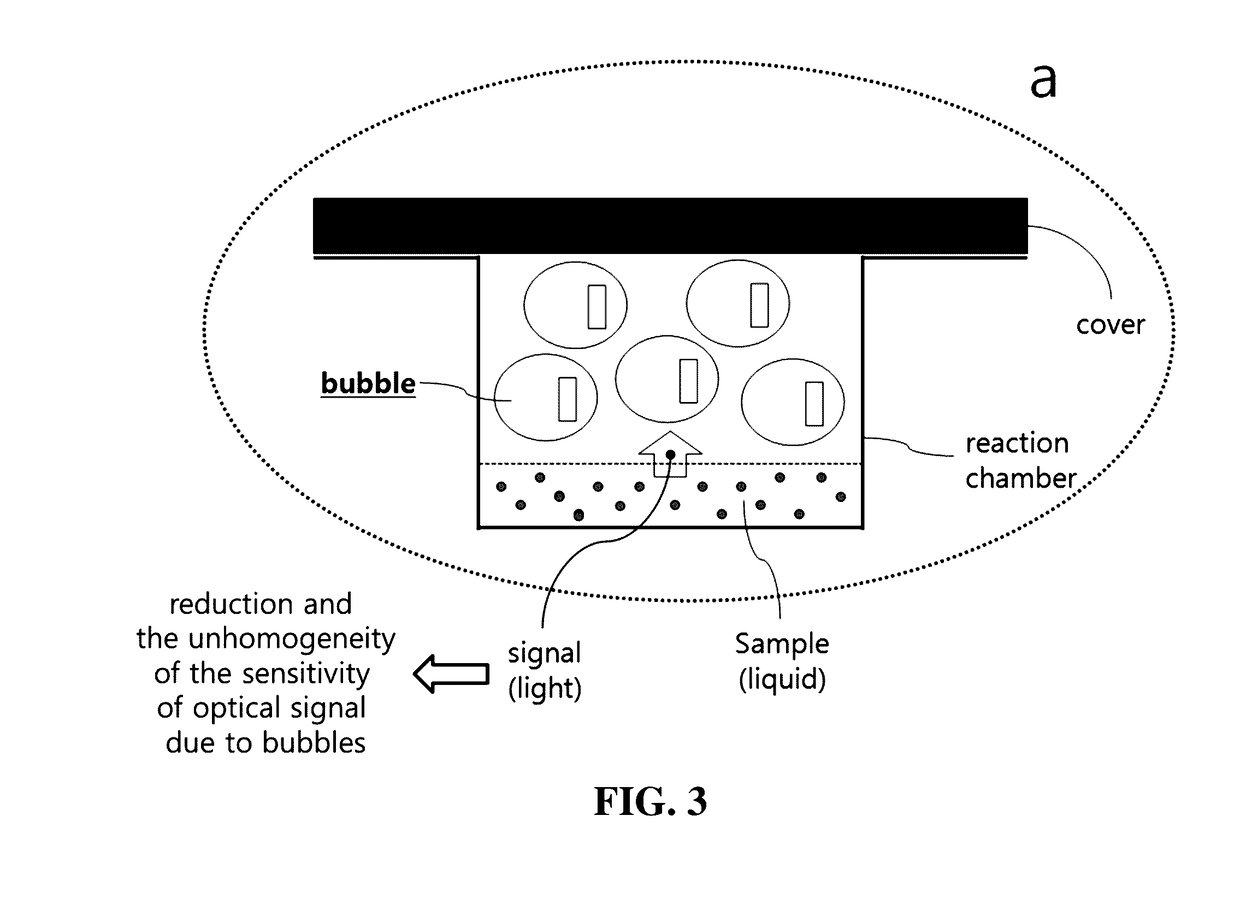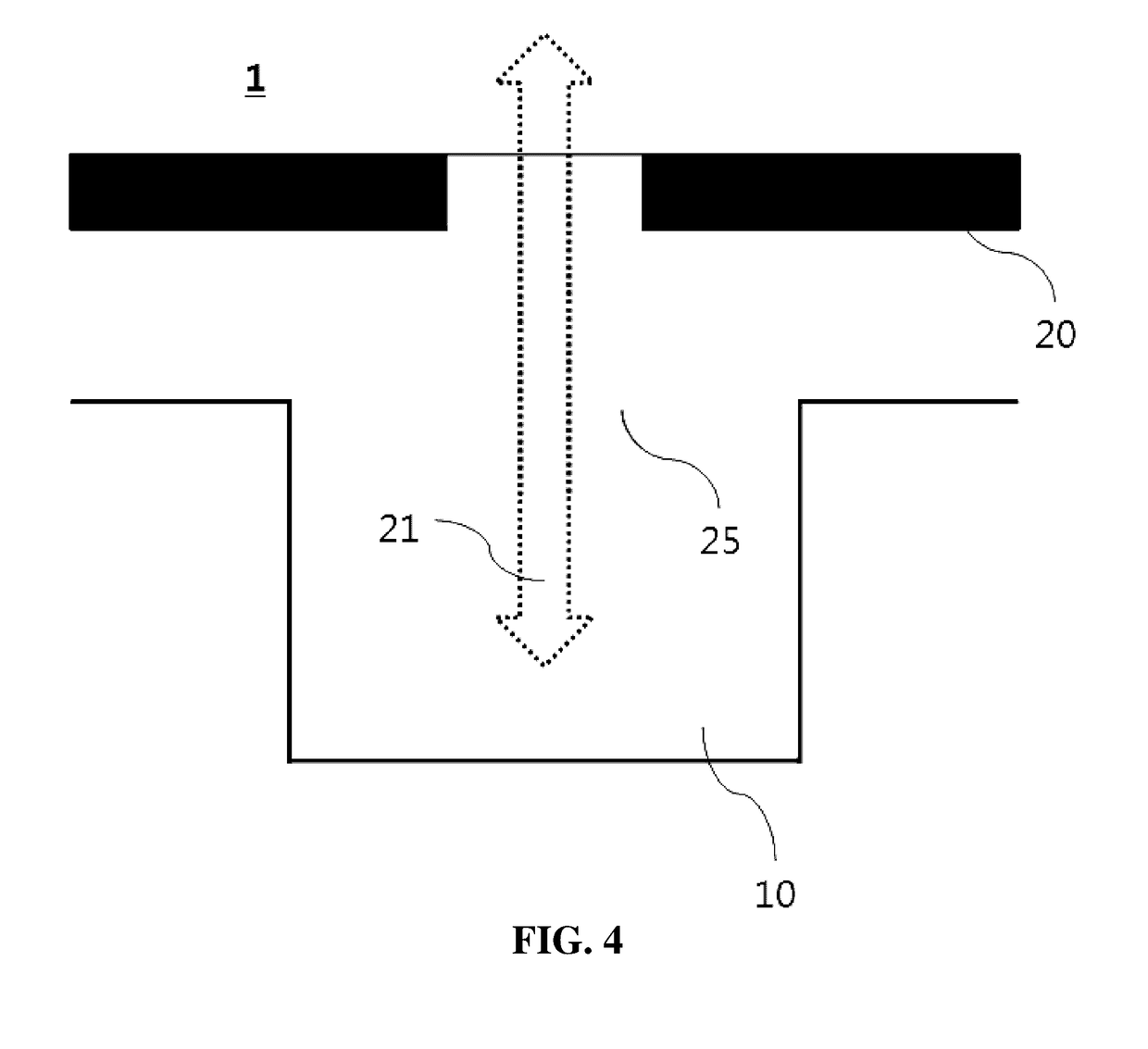High-speed real-time PCR device based on lab-on-a-chip for detecting food-borne bacteria to agrifood, and methods for detecting food-borne bacteria to agrifood using the same
a lab-on-a-chip, real-time pcr technology, applied in the field of micro pcr chips, can solve the problems of long time, high cost of producing antibodies, use and storage, etc., and achieve the effect of fast and accurate detection, low cos
- Summary
- Abstract
- Description
- Claims
- Application Information
AI Technical Summary
Benefits of technology
Problems solved by technology
Method used
Image
Examples
example 1
on of Micro-PCR Chip
[0091]As shown in FIG. 12, the first to third plates (100, 200, 300) of plastic material in the flat shape were prepared. The first plate (100) was prepared with a thickness of 0.5 mm, the second plate (200) was prepared with a thickness of 2 mm, but by integrating nineteen PCR reaction chambers (10) in a central circular region, and the third plate (300) was prepared with a thickness of 2 mm, but by forming the light transmission portion (25) to embody a circular groove corresponding to the central circular region on its lower end surface and to protrude toward to the interior of nineteen the PCR reaction chambers. In addition, a flexible packing portion (50) which can be coupled in correspondence with the circular groove of the third plate (300) and the light transmission portion (50) was prepared and attached to a lower end surface of the third plate (300). Then, a double-sided adhesive tape was bonded to the upper of the first plate (100) and the second plate...
example 2
on and Synthesis of Primer Set for Detecting Food-Borne Bacteria
[0092]The primer used for real-time detecting four kinds of food-borne bacteria was prepared via Primer 3 by setting the GC % to be 40% to 60%, and the Tm value to be 65 to 75° C., and the prepared primer was synthesized by requesting to Geno Tech company. Forward / Reverse base sequence of the primer sets for specifically detecting four kinds of food-borne bacteria and the corresponding product size (bp) are as shown in Table 1 below.
TABLE 1 ProductsizeStrain name(bp)SequenceSalmonella 127(Forward) TGT TGC GGA ACG spp.CGC TTG ATG AGC TTT (SEQ IDNO: 1) (Reverse) CAG GAA ATT TCG CTT CCA GTT GGT CCAG (SEQ ID NO: 2)Listeria221(Forward) GCG CCA CTA CGG monocytogenesACG TTT AAC CAA G (SEQ ID NO: 3) (Reverse) ACA ATC GCA TCC GCA AGC ACT GTA G(SEQ ID NO: 4)Staphylococcus127(Forward) ATT GGT TGA TAC aurensACC TGA AAC AAA GCA TCC (SEQ ID NO: 5) (Reverse) AAA GCT TCG TTT ACC ATT TTTCCA TCA GCA (SEQ ID NO: 6)Escherichia 136(Forward)...
example 3
ce of PCR (Comparison Experiment)
[0093]PCR was performed by using the PCR apparatus of another company and the real-time PCR apparatus according to one example of the present invention, based on primer sets for detecting four kinds of food-borne bacteria according to one example of the present invention. The conventional PCR device of BIO-RAD Company (BIORAD CFX 3600 Connect™ Real-time PCR) was used as the PCR apparatus of other company. When Comparing it with the real-time PCR apparatus according to one example of the present invention, the PCR apparatus of other company uses PCR vessel with tube type, whereas the PCR device according to one example of the present invention uses PCR vessel with chip type, and has the larger working volume of 20 microliters (μl) in the PCR apparatus in contrast to 12 microliters (μl) of the working volume in the PCR device according to one example of the present invention, and has 21 kg (kg) of the heavier equipment weight of PCR apparatus, in contr...
PUM
| Property | Measurement | Unit |
|---|---|---|
| Temperature | aaaaa | aaaaa |
| Temperature | aaaaa | aaaaa |
| Temperature | aaaaa | aaaaa |
Abstract
Description
Claims
Application Information
 Login to View More
Login to View More - R&D Engineer
- R&D Manager
- IP Professional
- Industry Leading Data Capabilities
- Powerful AI technology
- Patent DNA Extraction
Browse by: Latest US Patents, China's latest patents, Technical Efficacy Thesaurus, Application Domain, Technology Topic, Popular Technical Reports.
© 2024 PatSnap. All rights reserved.Legal|Privacy policy|Modern Slavery Act Transparency Statement|Sitemap|About US| Contact US: help@patsnap.com










